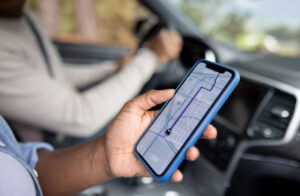Key Points:
- Medical Imaging tests are often used by medical professionals to discover and diagnose internal injuries that cannot be seen by the naked eye
- Even though these tests can be very expensive, they are often the only way your doctor can evaluate your injuries thoroughly and help you toward recovery
- In accident claims, the evidence medical imaging provides can help to prove not only the severity of your injuries, but also the time it may take for you to heal if healing is even possible
- Should it be necessary for your legal team to take your claim to court, having evidence like medical image testing results can often result in a larger compensation package
What is Medical Imaging?
Medical imaging tools are essential for diagnosing and managing a wide range of medical conditions. They allow doctors to see inside the body without having to perform surgery, and they can help to guide treatment and monitor progress. Even though medical imaging tests can be expensive, having the evidence medical imaging tests can provide can often make a big difference in the outcome of your insurance claim.

Common Medical Imaging Tools Used for Diagnosing Car Accident Injuries
Here are some specific examples medical professionals and how they use medical imaging tools for the diagnosis and treatment of accident-related injuries:
- Emergency room physicians: Emergency room physicians are trained to assess and treat patients with a wide range of injuries, including those caused by car accidents. They may order medical imaging tests, such as X-rays, CT scans, Ultrasound procedures, and MRI scans, to identify and diagnose dangerous internal injuries that may not be visible to the naked eye.
- Radiologists: Radiologists are medical doctors who specialize in interpreting medical images. They may be called in to consult on the diagnosis of complex injuries or to help guide minimally invasive procedures.
- Orthopedic surgeons: Orthopedic surgeons specialize in the diagnosis and treatment of injuries and conditions of the musculoskeletal system, including bones, joints, muscles, and ligaments. They may use medical imaging to diagnose fractures, ligament tears, and other injuries.
- Neurosurgeons: Neurosurgeons specialize in the diagnosis and treatment of injuries and conditions of the brain and spine. They may use medical imaging to diagnose concussions, spinal cord injuries, and other neurological injuries.
- Other medical specialists: Other medical specialists, such as cardiologists, pulmonologists, and gastroenterologists, may also use medical imaging to diagnose and treat injuries that occur in car accidents.
Popular Medical Imaging Tools That are Used on Car Accident Victims
Here are some examples of how medical imaging can be used to locate and treat car accident injuries:
- X-rays: X-rays are the most common type of medical imaging. They use a beam of high-energy radiation to create images of bones, muscles, and organs.
X-rays are used to diagnose a wide range of conditions, including fractures, infections, tumors, and arthritis.
- Computed tomography (CT) scans: CT scans use X-rays to create detailed cross-sectional images of the body. A CT scan is the fastest and most widely available imaging test for head injuries, and it is very good at detecting bleeding in the brain, skull fractures, and other structural abnormalities caused by trauma such as in a car accident.
- Magnetic resonance imaging (MRI) scans: MRI scans use powerful magnets and radio waves to create detailed images of the body’s soft tissues, such as the brain, muscles, and organs following a traumatic event such as a car accident. An MRI is more sensitive than a CT scan for detecting certain types of brain injuries, such as diffuse axonal injury, which is the most common type of injury in concussions.
A diffuse axonal injury is a traumatic brain injury that is caused by a shearing force on the brain. This can happen when the head is suddenly accelerated or decelerated, such as in a car accident or fall. The shearing force can damage the axons, which are the long fibers that connect the different parts of the brain.
DAI is a serious injury that can lead to a variety of short and long-term cognitive, physical, and behavioral problems. The severity of the symptoms depends on the extent of the damage to the axons. In some cases, people with DAI may make a full recovery, but others may have permanent disabilities.
- Ultrasound: Ultrasound uses high-frequency sound waves to create images of the body’s internal structures. This tool can be used to visualize injuries inside the body which can happen in car accidents
- Dental X-rays: Dental X-rays are often used by your dentist to diagnose and monitor dental problems, such as cavities and gum disease. However, this procedure can also be used to assess the damage to the teeth and jawbones after a car accident.
Types of Injuries That Can be Proven by Medical Imaging
They say a picture is worth a thousand words. Just as obtaining photographs of the accident scene can be critically important in an accident case, medical imaging is also an important tool that can help to establish injuries in an accident claim case.
- Medical Images can provide objective evidence of the injury. Medical images, such as X-rays, CT scans, and MRI scans, can be used to show the location and severity of an injury. This can be helpful in proving that the injury was caused by the accident and that it is as serious as the plaintiff claims.
- Medical Images can help to diagnose injuries that are not visible to the naked eye. Some serious and painful injuries, such as internal bleeding and ligament tears, may not be visible from the outside. Medical imaging can help to identify these types of injuries so that they can be treated properly.
- Medical Images can help to track the healing process. Medical imaging can be used to track the healing of an injury over time. This information can be used to determine when the plaintiff is able to return to work and other activities.
In addition to helping to establish the injury, medical imaging can also be used to document the plaintiff’s pain and suffering. For example, an MRI scan of a herniated disc can show the amount of pressure on the nerve root, which can be used to support a claim for pain and suffering.
Medical imaging can be a powerful tool in personal injury cases. It can help to prove the existence of an injury, show its severity, and document its impact on the plaintiff’s life.
Recovering Damages Depends upon Proving Injuries
After an accident, you may have to decide whether or not to hire an attorney to help you recover your damages and losses. Here are several factors to consider while deciding whether or not to retain an attorney in an accident case where there are internal injuries makes sense:
- Internal injuries, such as organ damage, internal bleeding, and fractures, can be difficult to diagnose and treat. They may not show up immediately on imaging tests, and they may require specialized medical care. An attorney can help you navigate the medical system and ensure that you receive the care you need.
- Internal injuries can require hospitalization, surgery, and other expensive medical treatments. An experienced attorney can help you recover the compensation you need to pay for your medical bills and other expenses.
- Internal injuries can lead to permanent disabilities, loss of income, and pain and suffering. An attorney can help you recover the compensation you need to compensate you for your losses.
- Insurance companies may try to offer you a settlement that does not include all of your legitimate claims. Insurance companies are often reluctant to pay out full compensation for internal injuries. They may try to lowball you with a small initial settlement offer, or they may deny your claim altogether. An attorney will negotiate with the insurance company on your behalf and work to ensure that you receive a full and fair settlement.
If you have been injured in an accident and have suffered internal injuries, it is important to at least consult with an experienced personal injury attorney before settling your claim. An attorney can help you understand your legal rights and options, and they can fight to protect your interests.
How an Attorney Helps to Recover Damages
Here are some specific examples of how your attorney can help you successfully recover what you’ve lost in an accident case where there are internal injuries:
- Investigate the accident and gather evidence. An attorney has the resources to thoroughly investigate the accident and gather evidence to support your claim. In order to definitively prove who was at fault for the accident and, therefore, who is responsible to pay for the damages, may include obtaining police reports, video footage, witness statements, and medical records.
- Negotiate with the insurance company. An attorney is trained to aggressively negotiate with the insurance company on your behalf in order to reach a full and fair settlement. Insurance companies make their money by minimizing or not paying the full value of valid claims. If the insurance company is not willing to offer a fair settlement, your attorney may file a lawsuit.
- Represent you in court. Most accident cases are settled out of court, however if your case does goes to court, your attorney will represent you and argue your case on your behalf.
An experienced personal injury attorney who understands your legal rights can help maximize your chances of recovering the compensation you need to pay for your medical bills, lost wages, and other expenses. Your attorney can also help to gain compensation for long term medical care if it is necessary as well as recover for diminished or lost quality of life.
Communication – An Attorney’s Most Critical Skill
It may not be enough to prove that your injuries were caused by the accident in question. A big part of the process of gaining compensation for your injuries is successfully communicating the ways in which those injuries have impacted your life as a victim. Lawyers train for years to sharpen their ability to do this.
Your lawyer will use medical images as powerful tools in your accident injury case. He or she will use the images to prove the existence of an injury, show its severity, document its impact on you and your family’s life, and educate the jury about your injuries.
A lawyer can use medical images to prove an accident injury claim in a number of ways, including:
- To establish the existence of the injury. Medical images, such as X-rays, CT scans, and MRI scans, can be used to show the location and severity of an injury. This can be helpful in proving that the injury was caused by the accident and that it is as serious as the plaintiff claims.
- To diagnose injuries not visible to the naked eye. Some injuries, such as internal bleeding and ligament tears, and brain injuries like concussions may not be visible from the outside. Medical imaging can help to identify these types of injuries so that they can be treated properly.
- To track the healing process. Medical imaging can be used to track the healing of an injury over time. This information can be used to determine when the plaintiff may be able to return to work and other activities.
- To document the plaintiff’s pain and suffering. For example, an MRI scan of a herniated disc can show the amount of pressure on the nerve root, which can be used to support a claim for pain and suffering in the short or long-term.
In addition to these specific uses, your lawyer may use medical images to educate the jury about the plaintiff’s injuries and to help them understand the impact of the injuries on the plaintiff’s life.
However, it’s important to understand that the insurance company will also have lawyers whose main job is to prove that your injuries are not the fault of their client.
How Do Insurance Companies Cast Doubt on Medical Image Evidence
The more severe the victim’s injuries are, the more likely the insurance company will fight to keep from paying your claim. The way they make money is to avoid paying claims, no matter how legitimate they are.
To do this, insurance company lawyers will often attempt to minimize the validity of evidence including medical images in the following ways:
- Questioning the quality of the images. Insurance company lawyers may argue that the medical images are not reliable because they are of a low quality and, therefore, not reliable. They may also argue that the images were taken incorrectly or that they do not show the full extent of the plaintiff’s injuries.
- Interpreting the images differently than the plaintiff’s doctors. Insurance company lawyers may have their own medical experts review the images and offer a different interpretation than the plaintiff’s doctors. They may argue that the images do not show any injuries or that the injuries are not as severe as the plaintiff claims.
- Arguing that the injuries were not caused by the accident. Insurance company lawyers may argue that the plaintiff’s injuries were pre-existing or that they were caused by something other than the accident. For example, they may argue that the plaintiff’s back pain was caused by a sports injury or that their headache was caused by a migraine.
In addition to these specific tactics, insurance company lawyers may also try to discredit the plaintiff’s doctors or to cast doubt on the plaintiff’s credibility.
How Medical Imaging Can Backfire
Medical images are not always easy to interpret, even for experienced doctors. Insurance company lawyers often use this ambiguity to minimize your claim. Insurance company lawyers will often have their own medical experts review the images and offer a different interpretation than the plaintiff’s doctors.
Medical images can show pre-existing conditions. Medical images can reveal injuries or conditions that the plaintiff had before the accident. This can give the defense lawyers an argument that the plaintiff’s injuries were not caused by the accident or that they are not as severe as the plaintiff claims.
Medical images can be manipulated. Medical images can be manipulated to make them appear worse or better than they actually are. Insurance company lawyers may try to use this fact to discredit the plaintiff’s evidence.
Medical images must be used carefully and accurately explained. In addition to these specific ways, medical imaging can also backfire when they are not used properly. For example, if the plaintiff’s lawyer does not properly explain the images to the jury or if the defense lawyer is able undermine the accuracy in any way, the medical imaging can actually harm the plaintiff’s case.
It is important to note that the risks of using medical imaging in an accident injury claim are generally outweighed by the benefits. Medical imaging can be a powerful tool for proving the existence and severity of injuries. Your experienced lawyer understands these risks and can help you be aware of the risks and to take steps to mitigate them.

 1201 West Peachtree Street #2339 Atlanta, GA 30309+1-770-212-3795$0-$100000
1201 West Peachtree Street #2339 Atlanta, GA 30309+1-770-212-3795$0-$100000Great Law Firm , Friendly staff and makes you feel at ease . Christin is awesome to work with , she makes you feel like family .

Your Lawyer Can Use Medical Imaging as Strong Evidence to Prove an Injury
An experienced personal injury lawyer who knows how to deal with “hidden” injuries can help you win your accident injury claim by using medical images in a number of ways:
- They can help you to identify hidden injuries. Some injuries, such as whiplash, concussions, and internal bleeding, may not be visible on X-rays or other common medical imaging tests. An experienced personal injury lawyer will know how to identify these types of injuries and will be able to order the appropriate tests to diagnose them.
- They can help you to interpret medical images. Medical images can be complex and difficult to interpret, even for doctors. An experienced personal injury lawyer will have the knowledge and experience to interpret medical images and to explain them to the jury in a clear and concise way.
- They can help you to build a strong case. Medical imaging can be powerful evidence in an accident injury claim. An experienced personal injury lawyer will know how to use medical images to build a strong case and to prove that your injuries were caused by the accident.
- They can negotiate with the insurance company on your behalf. Insurance companies are often reluctant to pay out on claims involving hidden injuries. An experienced personal injury lawyer will know how to negotiate with the insurance company and will be able to get you the compensation that you deserve.















